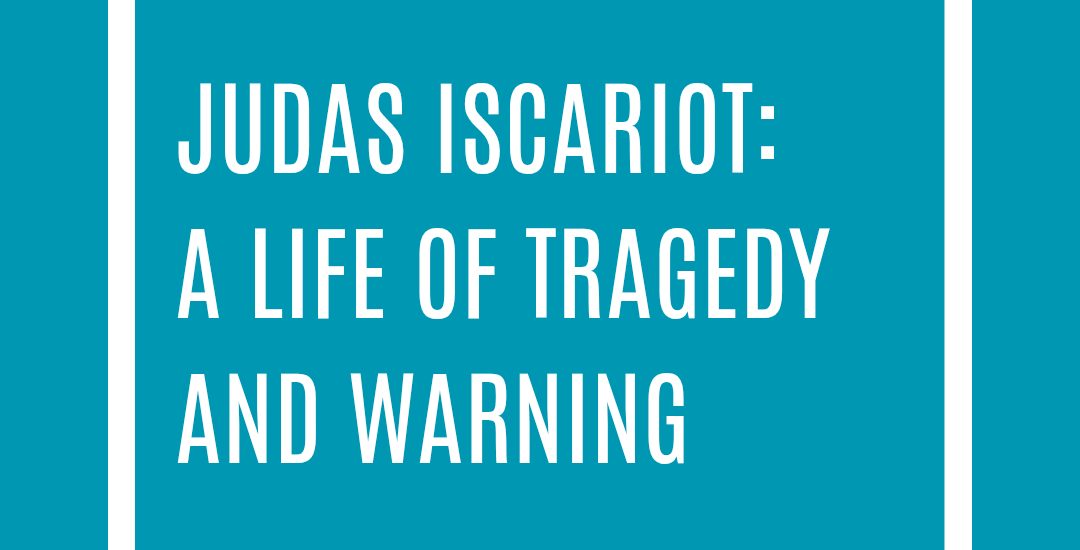When the name Judas Iscariot is mentioned, most immediately think of betrayal. His name has become synonymous with treachery throughout history. Yet before we reduce Judas to a one-dimensional villain, it’s important to remember that he was chosen as one of the Twelve, walked with Jesus, saw the miracles, and was entrusted with responsibility among the disciples. His story is not just about betrayal—it’s a sobering warning about the dangers of unchecked sin, misplaced priorities, and a heart that refuses transformation.
Judas’ Background
The Gospels tell us little about Judas’ early life, but his surname Iscariot likely points to his hometown, Kerioth, in Judea (John 6:71). Unlike the other disciples who were Galileans, Judas was a southerner. This already made him stand out. He was given a trusted role as the group’s treasurer, responsible for handling the money bag (John 12:6). Clearly, the others saw him as capable, perhaps even reliable.
But the same Scriptures also tell us that Judas was dishonest, helping himself to the money entrusted to him. This small compromise in private became the seed of a much greater fall.
The Road to Betrayal
Judas had the privilege of being close to Jesus—hearing His teaching, witnessing miracles, and experiencing His love. Yet, his heart was drawn to something else: money and self-gain.
When Mary anointed Jesus with expensive perfume in Bethany, it was Judas who protested, not because he cared for the poor, but because he wanted control of the funds (John 12:4–6). This moment revealed his values. Shortly after, he went to the chief priests to negotiate Jesus’ betrayal—for thirty pieces of silver (Matthew 26:14–16).
What happened? How could someone so near to Jesus drift so far? Judas’ tragedy reminds us that proximity to Christ is not the same as intimacy with Christ. You can be close to church, ministry, and miracles—and yet far from Jesus in your heart.
His Final Moments
The Scriptures paint a haunting picture of Judas’ last hours. At the Last Supper, Jesus dipped the bread and handed it to Judas, extending one final act of grace (John 13:26). But instead of repenting, Judas hardened his heart. “And it was night,” John records, not just describing the time but the darkness of Judas’ soul (John 13:30).
After betraying Jesus with a kiss in Gethsemane, Judas was overwhelmed with guilt. But instead of turning to Jesus for forgiveness, he tried to fix things himself by returning the silver. When the priests rejected him, despair consumed him, and he ended his life (Matthew 27:3–5).
What a tragic ending. Judas knew remorse, but he never knew repentance. He felt regret, but he did not return to the Redeemer.
Lessons for Us Today
1. Guard the small compromises.
Judas’ downfall didn’t begin with silver—it began with secret theft. Small sins unrepented grow into bigger ones. What we tolerate privately will eventually destroy us publicly.
2. Proximity is not intimacy.
You can walk with Jesus, serve in ministry, and even handle “holy things”—yet your heart can still wander. Judas reminds us that external closeness does not equal internal devotion.
3. Respond to grace when it comes.
Jesus reached out to Judas again and again. Even at the Last Supper, He offered bread. Grace was extended, but Judas rejected it. Don’t waste the moments when Christ calls you back.
4. Repentance leads to life, regret to death.
Peter also failed Jesus, but unlike Judas, he wept bitterly and returned to the Lord (Luke 22:62). Judas’ sorrow ended in despair; Peter’s sorrow led to restoration. The difference? True repentance.
Conclusion
The life of Judas is a tragedy, but also a teacher. It reminds us that the heart is deceitful if left unchecked, that secret sins destroy slowly, and that without repentance, remorse will eat us alive. But it also reminds us that no matter how far we fall, the arms of Jesus are open—if only we return.
In the end, Judas’ name warns us, but Peter’s story gives us hope. Both failed, but only one came back. May we learn from Judas, but live like Peter—running back into the arms of grace.





